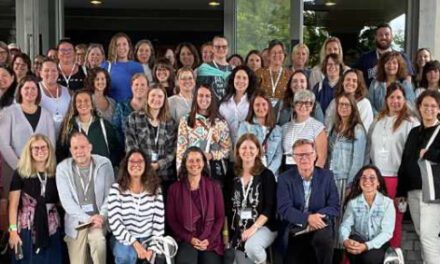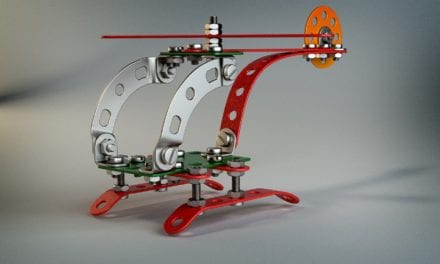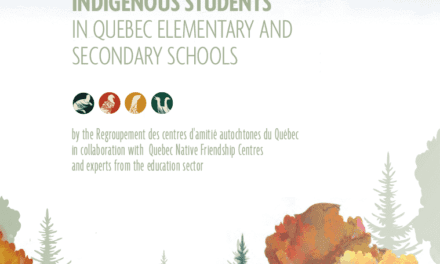This post was co-written by Elizabeth Alloul
Spring is here! The snow is melting! Ice is breaking everywhere. Inspired by nature, we wanted to show you some motivating and engaging icebreakers that work in our online classrooms.
What are Icebreakers?
Icebreakers are short, fun activities that help develop skills like team-building, social interaction, sharing, and empathy.
– They provide opportunities for students to engage with the teacher and other students.
– They are often used in-class, but can easily be adapted to an online environment.
– They are beneficial in online teaching; They create connections with other participants, they decrease stress, and thus encourage engagement.
– They can be on-topic: to verify existing knowledge or to introduce the subject of the class.
– They can be off-topic: to bring participants together, spark friendly interactions, get the conversation going, to activate thinking and participation.
Challenge: Break the Ice
| Look around your house and find the following objects:
– Something round Now let’s see what everyone found! – Open the Padlet You’ve just participated in our very first online blog icebreaker! |
Why use Icebreakers online?
Icebreakers serve many purposes:
– They promote social presence online.
– They help participants feel connected to the other participants, which in turn increases motivation and action.
– They contribute to reducing stress levels at the beginning of a class/session and encourage participant engagement.
– Students who turn on their camera and microphone to participate in a short, engaging and fun activity, are more likely to turn on their camera and microphone to participate during an online session.
Some Online Icebreakers. Let’s Play!
Keep in mind that many of these activities succeed with our youngest learners, however they are as beneficial with older learners and even adults. We’ve even used some of these activities in teacher PD workshops. People love to share and this gets them started!
 1. What is your Emoji Today?
1. What is your Emoji Today?
At the beginning of the class, ask students to use emoji reactions to describe how they are feeling. This can also be used as a quick check-in during class and at the end of the session.
Why this works:
– Students choose what they want to share with the group.
– All participants who want to share, are given the opportunity to express how they feel in a non-threatening way.
– Gives the teacher the pulse of the class at that moment.
 2. Tell Us the Story Behind Your Shoes
2. Tell Us the Story Behind Your Shoes
Ask students to send you a photo of their shoes and present it to the class. The student explains how the shoes are important, and when they were last worn. Other students can ask them questions. This could be done with small groups in breakout rooms.
Why this works:
– Students choose what they want to share with the group.
– All participants get a chance to speak as little or as much as they want.
– Vocabulary practice.
– Getting to know each other.
3. Expressions of Gratitude
Ask students to share one good thing that happened to them. Something that someone did for them, or that they did for someone else. Each student begins their statement with, “I am grateful for…” or “I am grateful to…”
Why this works:
– This activity reminds participants that there are many things to be grateful for, even during more difficult times.
– Helps to develop empathy: different people are grateful for different things.
– Students choose what they want to share with the group.
– All participants get a chance to speak as little or as much as they want.
– Vocabulary practice.
– Getting to know each other.
4. Simon Says: Cameras On!
Cameras on! One person assumes the role of Simon and gives instructions on which actions to do, using the magic phrase: Simons says before each action. If the magic phrase is not used, then anyone who does the action is “Out”. The last player remaining becomes the next Simon and the game begins anew!
A Twist on Simon Says
When a player does not follow the instructions, he/she becomes the new Simon.
A List of Simon Says Commands
Why this works:
– This version ensures that all students are playing all the time.
– Vocabulary practice.
– Movement improves attention and alertness.
 5. I Spy with my Little Eye
5. I Spy with my Little Eye
Start off by giving a clue about one of the participants like, “I spy with my little eye something blue in someone’s background”. Then have students guess which student they are describing. The person who guessed correctly then gets to give out a clue about someone else.
Why this works:
– All participants get a chance to speak as little or as much as they want.
– Vocabulary practice.
– Student choice.
6. Scavenger Hunt
Send your participants on a hunt to find objects in their house. Participants can show their object(s) to the camera and talk about what they found.
Why this works:
– All participants get a chance to speak as little or as much as they want.
– Vocabulary practice.
– Movement improves attention and alertness.
– Students choose the objects they want to present.
7. One Truth & Two Lies
Ask students to come up with three statements about themselves. Two statements must be false and one must be true. Each participant must share their statements verbally while the other participants determine which statement is true. They can write their statements in the chat (numbering them 1, 2, or 3), read out each one to the group, and ask the participants to raise their hand for the statement they think is true.
Why this works:
– All participants get a chance to speak as little or as much as they want.
– Vocabulary practice.
– Getting to know each other
– Participants choose what they want to share with the group.
8. Weekend Photo Contest
Ask students to bring in a photo of their weekend to present to the class without any explanation. Students must ask questions to find out where, what and with whom this activity was done.
Ex.: Was it at a park? Is the person a family member? Do you like this activity?
Why this works:
– Students choose what they want to share with the group.
– All participants get a chance to speak as little or as much as they want.
– Vocabulary practice (Asking questions).
– Getting to know each other.
9. Twenty Questions
One participant thinks of a person, place or object, and draws it, writes it on a piece of paper, or holds the object in their hand. The other students must guess what the object is, by asking only yes/no questions. The group has 20 chances in the form of questions to figure out what the object is.
Why this works:
– This exercise requires students to listen to each other attentively so that they do not repeat questions and “waste” their chance.
– Students choose what they want to share with the group.
– All participants get a chance to speak as little or as much as they want.
– Vocabulary practice (descriptive words and asking questions).
10. Charades
The teacher sends a few vocabulary words to a student via private message in the chat. That student chooses one of the words, acts it out, and the class tries to guess the word that is being acted out.
Here is a fun list of words.
Why this works:
– Students choose the word they want to act out.
– All participants get a chance to participate as little or as much as they want.
– Vocabulary practice.
– Some movement, which improves attention and alertness.
Which Icebreaker Will You Choose?
Resources
Anchor of Hope Charities. (2012, January 6). Worn out shoes. flickr.com. https://www.flickr.com/photos/anchorofhopecharities/6667717793.
Dyson, Dannielle. (2021, March 20). Ice. LEARN.
Willkomm, A. C. (2018, July 24). The 3 Benefits of Using Ice Breakers. Drexel University: Goodwin College of Professional Studies. https://drexel.edu/goodwin/professional-studies-blog/overview/2018/July/The-3-benefits-of-ising-ice-breakers/.



 2. Tell Us the Story Behind Your Shoes
2. Tell Us the Story Behind Your Shoes 5. I Spy with my Little Eye
5. I Spy with my Little Eye


